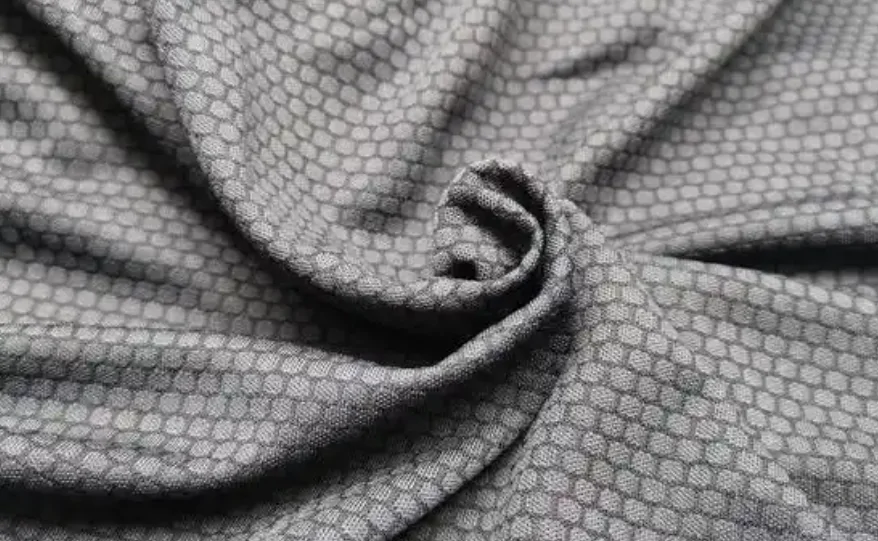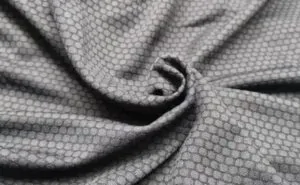Have you ever stopped to think about what makes your sportswear so comfortable during a long workout or intense game? The secret lies in the fabric. As someone who’s spent years in the sportswear industry, I can attest that the type of material used can make or break your athletic performance, comfort, and durability.
The sportswear market is flooded with a vast array of clothing items, but the choice of material is often overlooked. The right fabric can enhance your performance, while the wrong one can hinder it. Understanding the properties of different materials is crucial for both manufacturers and consumers.
Understanding the Importance of Fabric Selection in Sportswear
The fabric used in sportswear is a critical factor that influences athletic performance and comfort. When choosing high-performance sports apparel, several key considerations come into play, including design, comfort, weight, durability, moisture regulation, and protection against elements.
How Fabric Affects Performance
Fabric selection directly impacts athletic performance through moisture management, temperature regulation, and freedom of movement. For instance, elite athletes prioritize fabric properties that enhance their specific sport requirements. The weight of the fabric also plays a crucial role, as even small differences can affect results in competitive sports.
Different fabric constructions, such as knit versus woven, significantly affect performance characteristics. Innovations in fabric technology have revolutionized sports performance, as seen in professional athletics. Moreover, fabric selection varies based on activity intensity, duration, and environmental conditions.
Key Properties to Consider
When evaluating a fabric’s suitability for sportswear, several key properties come into consideration: breathability, moisture-wicking ability, durability, stretch, and recovery. These properties are essential for ensuring that the clothing provides comfort and supports performance during various activities.
For example, moisture-wicking fabrics help keep athletes dry and cool, while durable materials withstand the rigors of intense training and competition. The choice of fabric can significantly impact the overall performance and comfort of the sportswear.
Essential Factors When Choosing Sportswear Fabrics
Selecting the right material for your sportswear is crucial for both comfort and functionality. As someone who’s worked extensively with athletic apparel, I’ve identified key factors that can make or break your sporting experience.
Comfort and Fit
Comfort is paramount in sportswear. You need a fabric that’s soft, malleable, and stretch-resistant to allow for full mobility during strenuous activities. A proper fit is also essential, as it directly affects your performance and overall comfort during exercise.
Moisture Management
Moisture regulation is critical in functional sportswear. The fabric should be breathable, capable of transporting sweat from your body to the outside of the material. This prevents overheating or overcooling, which can lead to injuries during hot or cold conditions.

Durability and Weight
The weight of the fabric is another important factor. Unnecessary ounces can rob you of energy and worsen your performance. Balancing durability with weight considerations is key. The fabric must be hard-wearing, as it’s put under significant stress during exercise, yet light enough to not hinder movement.
Weather Protection
Finally, weather protection properties in fabrics create versatility in sportswear for various environmental conditions. Whether you’re engaging in outdoor or indoor activities, the right fabric can protect you from the elements, enhancing your overall sporting experience.
In conclusion, when choosing sportswear fabrics, it’s essential to consider comfort and fit, moisture management, durability and weight, and weather protection. By understanding these important factors, you can select the best material for your specific sporting activities, ultimately enhancing your performance and comfort.
Synthetic Sportswear Fabrics
In the realm of sportswear, synthetic materials have emerged as a dominant force, replacing natural fibers in many applications. As I delve into the world of synthetic sportswear fabrics, I’ll explore their benefits, properties, and real-world performance.
Polyester
Polyester is a popular choice for sportswear due to its durability, moisture-wicking capabilities, and cost-effectiveness. It’s made from plastic fibers, making it lightweight, wrinkle-free, and breathable. However, its non-absorbent nature can sometimes leave sweat to dry on the exterior.

Nylon
Nylon is another widely used synthetic fabric in sportswear, known for its exceptional strength-to-weight ratio and smooth feel against the skin. It’s stretchy, quick-drying, and mildew-resistant, making it ideal for high-intensity activities.

Spandex/Elastane
Spandex, also known as elastane, has revolutionized sportswear by providing unprecedented stretch and recovery. It can stretch up to 100 times its original size, making it agile and comfortable for strenuous movements. Its ability to absorb sweat, breathe, and dry quickly has made it a staple in modern sportswear.

Microfiber
Microfiber is a synthetic fabric made from a blend of polyester and polyamide, known for its ultra-soft feel and enhanced moisture management. Its threads are 100 times finer than human hair, making it highly absorbent and non-abrasive.
As I’ve observed, these synthetic fabrics perform exceptionally well in real-world athletic scenarios, offering a range of benefits. However, there are also sustainability considerations to acknowledge, as the production and disposal of synthetic fabrics can have environmental impacts.
Natural Sportswear Fabrics
As the sportswear industry continues to evolve, natural fabrics are making a significant comeback. I’m excited to explore the resurgence of natural materials in sportswear, driven by their unique properties and eco-friendly appeal.
Natural fabrics offer a compelling alternative to synthetic materials, providing comfort, sustainability, and performance. Let’s dive into some of the most popular natural fabrics used in sportswear today.
Cotton
Cotton has been a traditional choice for sportswear, and it’s experiencing a revival due to its breathability and better odor management compared to some synthetic materials. However, it lags behind in rapid sweat absorption, making it less ideal for high-intensity activities.
Merino Wool
Merino wool is exceptionally soft and has great moisture-wicking qualities, making it perfect for base layers worn next to the skin. It helps regulate body temperature and prevent blisters, which is why it’s popular for socks and high-performance sportswear.

Bamboo Fiber
Bamboo fiber is a sustainable alternative that’s gaining popularity in sportswear. It’s light, anti-static, moisture-wicking, and completely odorless. Bamboo fabric provides UV protection, is highly breathable, and stretchier than cotton, resulting in thinner yet more malleable garments.
In conclusion, natural fabrics like cotton, merino wool, and bamboo fiber are redefining the sportswear landscape. Each material has its unique benefits, from breathability and moisture management to sustainability and comfort. As consumers become more eco-conscious, the demand for natural sportswear fabrics is likely to grow.
Specialized Performance Fabrics
As athletes push their limits, specialized performance fabrics are emerging as a crucial factor in enhancing their performance. These advanced materials are designed to provide specific benefits such as waterproofing, breathability, and moisture-wicking properties.
Gore-Tex

Gore-Tex is a synthetic membrane that is used to coat regular fabrics, making them waterproof and windproof while allowing the skin to breathe. This technology has revolutionized outdoor sportswear, making it essential for extreme weather conditions. Gore-Tex is used in various sportswear items, including jackets, gloves, and running shoes.
Man-Made Cellulosic Fibers (MMCFs)
Man-Made Cellulosic Fibers are created from wood pulp, such as bamboo, eucalyptus, and beech. They share many characteristics with synthetic fabrics, including strength, durability, and moisture-wicking properties. However, MMCFs have the added advantages of being recyclable, biodegradable, and requiring less energy to produce.
Blended Fabrics
Blended fabrics combine the best properties of multiple materials to create optimal performance characteristics for specific activities. For instance, blending polyester with spandex can enhance flexibility and durability. These fabrics are designed to offer a balanced performance, making them suitable for a wide range of sports and activities.
The development of specialized performance fabrics is changing the landscape of sportswear, offering athletes enhanced performance, comfort, and durability. As technology continues to evolve, we can expect to see even more innovative materials in the future.
Matching Fabrics to Specific Sports Activities
As an athlete, I’ve learned that choosing the right fabric for your sport can make all the difference. Different sporting activities require specific types of clothing to optimize performance and comfort. For instance, sports like football and basketball require loose, comfortable apparel, while activities like biking or running demand more fitted clothing to avoid accidents.
High-Intensity Sports (Running, Cycling)
For high-intensity sports like running and cycling, moisture management is crucial. Fabrics that wick away sweat and dry quickly are essential. I prefer using polyester or nylon-based fabrics for these activities due to their breathability and lightweight construction.
Strength Training and Gym Workouts
When it comes to strength training and gym workouts, durability and stretch become paramount. Fabrics with a blend of polyester and spandex provide the necessary flexibility and recovery. These materials also offer a full range of motion, making them ideal for weightlifting and other strength training exercises.
Outdoor and Adventure Sports
Outdoor and adventure sports, such as hiking or skiing, require fabrics that offer environmental protection and versatility. Gore-Tex and similar waterproof, breathable fabrics are perfect for these activities. They keep you dry in wet conditions while allowing moisture to escape, preventing overheating.
Team Sports
For team sports, balancing performance needs with uniformity and durability is key. Fabrics that are both breathable and durable are ideal. Many team sports uniforms are made from a polyester-cotton blend, offering a balance between comfort, performance, and cost.

In conclusion, matching the right fabric to your specific sport or activity can significantly enhance your performance and overall experience. By considering factors like moisture management, durability, and environmental protection, you can choose the best fabric for your needs. Whether you’re running, lifting, or playing team sports, there’s a fabric out there designed to help you perform at your best.
Conclusion
When selecting sportswear fabrics, it’s essential to consider factors like comfort, moisture management, durability, and weather protection. Synthetic fabrics like polyester and nylon offer durability and moisture-wicking properties, while natural fibers like cotton and bamboo provide breathability and comfort. Specialized fabrics like Gore-Tex offer advanced weather protection.
The key is to match the fabric properties to your specific activity requirements. There’s no single “best” fabric for all sportswear applications; the right choice depends on the activity, intensity level, environmental conditions, and personal preferences. I encourage you to experiment with different fabrics to find what works best for you. Investing in quality sportswear with the right fabric is an investment in both performance and comfort.







